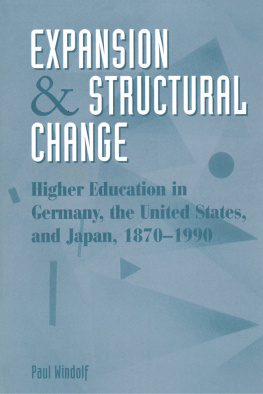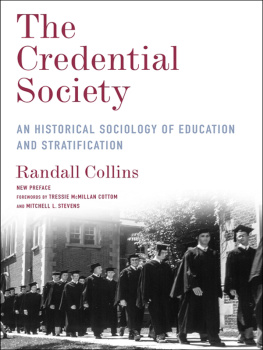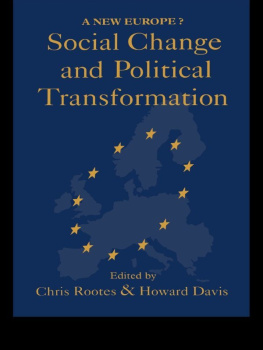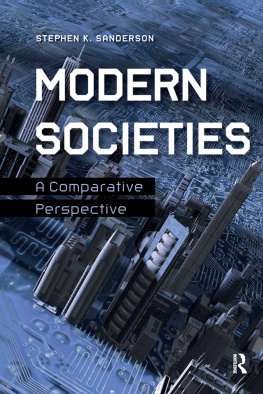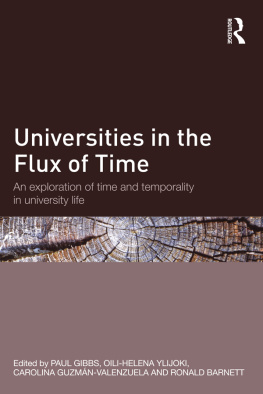Expansion and Structural Change
Expansion and Structural Change
Higher Education in Germany, the United States, and Japan, 1870-1990
Paul Windolf
First published 1998 by Westview Press
Published 2018 by Routledge
711 Third Avenue, New York, NY 10017, USA
2 Park Square, Milton Park, Abingdon, Oxon OX14 4RN
Routledge is an imprint of the Taylor & Francis Group, an informa business
Copyright 1997 by Taylor & Francis
All rights reserved. No part of this book may be reprinted or reproduced or utilised in any form or by any electronic, mechanical, or other means, now known or hereafter invented, including photocopying and recording, or in any information storage or retrieval system, without permission in writing from the publishers.
Notice:
Product or corporate names may be trademarks or registered trademarks, and are used only for identification and explanation without intent to infringe.
A CIP catalog record for this book is available from the Library of Congress.
ISBN 13: 978-0-8133-6663-0 (pbk)
Contents
Guide
This volume explores the expansion and structural changes that universities in Germany, the United States, and Japan have experienced over the past century. The expansion began in the latter third of the 19th century and has continued more or less uninterrupted down to the present. This process of expansion has followed a simple rule: enrollment has been higher in virtually every year than in the year before it. Even when enrollment figures declined for a short period, they quickly regained their previous level, from which the expansion then continued. In Germany less than 0.5% of a cohort attended university in 1870, 2% in 1930, 5% in 1960, 21% in 1980, and 32% in 1992.
While the quantitative growth reflected in such figures is considerable, the expansion in educational institutions has consisted of not merely a continual increment in the number of students but also the demise of traditional institutional structures and their replacement by new ones (Chap, 4). In Germany the ever growing number of students transformed the elitist Gymnasium into a mass secondary institution, and the earlier, elitist "Humboldt" style of university has been replaced by institutions of mass higher education. Both the goals and the substance of education have also changed, as the abstract, general education of the past has given way to a practical, professionalized training oriented to the demands of the marketplace. University expansion and the process of institutional change are the twin themes of the research presented here. The rapid growth necessitated a structural change in universities, which in turn accelerated the process of expansion even further.
The social origin of students provides a third topic of analysis (liberalization, second, that of the working class against the bourgeoisie, and, third, that of women for emancipation and equal rights. The introduction of admission quotas for ethnic minorities in the United States opened yet another round in this struggle for equal opportunity to university access.
This historical sequence of conflicts between social groups is reminiscent of Pareto's concept of the circulation of elites: "Because of the circulation of elites the ruling elite is constantly in a state of transformation. It flows like a river that today is never what it was yesterday. From time to time there occur sudden and violent eruptions. These revolutions always take place when in the ruling class whether because of inadequate circulation or other causes decadent elements collect which are no longer able to muster the force necessary to hold onto power.... In the meantime, persons of particular ability have gained power within the lower class who command the forces needed to carry out government functions, and who are prepared to use violence."
To Pareto the circulation of elites is, as a rule, a violent and revolutionary process, and this explains the central role which the concept of violence plays in his theory. Because the ruling elites seek to hold onto their power and deny new elites of the lower classes access to higher status positions, the circulation process is usually enforced by violence and revolution
Over the past century the "circulation of elites" has been tamed in modern industrial societies, and what previously occurred as "sudden and violent eruptions" appears today as processes of social reform and peaceful evolution. A continual process of circulation through institutionalized channels has replaced revolutionary upheavals. In modern democracies the educational institution, in particular the university, provides the most important avenue of upward mobility. The selection processes of the university and the government bureaucracy determine the rate of exchange mobility (circulation) in a given country. This can be accelerated or slowed by a relative "opening" or "closure" of educational institutions, changes in selection criteria, or the introduction of selection procedures (e.g., entrance examinations). From the point of view of the "circulation of elites" one can analyze a country in terms of whether an exchange is taking place, the extent to which government institutions regulate the exchange, and the role of universities in determining the rate of exchange.
The expansion of university education has not only had an impact upon the structure of the universities and social mobility but has also accelerated a process of modernization which Max Weber characterized as the bureaucratization and rationalization of Western nations (Schluchter 1989). As early as the 17th century Prussia introduced a system of eligibility for positions in the bureaucracy which led to a symbiosis between it and the university. As the basis for eligibility, and thus status, the new system substituted meritocratic principles for aristocratic birth or patronage (Rosenberg 1958). The meritocracy - the selection of personnel for higher status positions on the basis of formal education - became a model on which the management of large industrial firms subsequently came to orient themselves. Thus the university and the bureaucracy became allies in ascribing status in the modern industrial society.
On the part of the students there is the expectation that a university degree will provide them with a life-long entitlement to appropriate job and salary opportunities. On the other hand, the state bureaucracies in Germany and in France had been and are still obliged by law to fill the higher administrative positions with university graduates. This system stabilizes an exchange relationship between bureaucracy and university; the university recruits and socializes potential personnel in terms of the needs of the government bureaucracy. The academic education and culture of civil servants then represents a basis for the independence of the bureaucracy vis-a-vis the political parties and government. A large part of the university's power rests on this exchange. I illustrate the implementation of meritocratic selection principles here in administrative reforms carried out in Prussia and. from a comparative perspective, also in the United States, France, and Japan ().
Educational expansion, the structural reform of universities, the political struggle of different social groups for access to universities, and the meritocratic selection for higher status positions are mutually reinforcing processes. The growing number of students caused the collapse of the traditional elitist university and forced structural change and adaptation. However, the more important a university diploma became for obtaining access to higher positions, the more the political battle intensified between those who had gained access to higher education and those who had been excluded from it.

